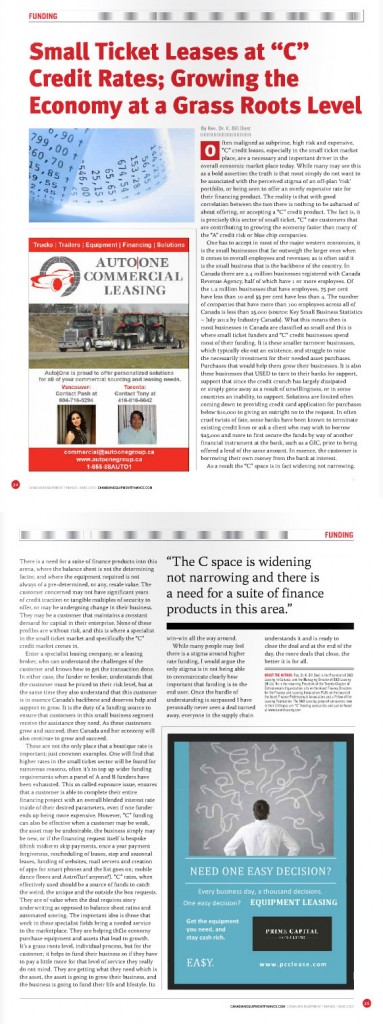By Rev. Or. K. Bill Dost
Often maligned as subprime, high risk and expensive, “C” credit leases, especially in the small ticket market place, are a necessary and important driver in the overall economic market place today. While many may see this as a bold assertion the truth is that most simply do not want to be associated with the perceived stigma of an off-plan ‘risk’ portfolio, or being seen to offer an overly expensive rate for their financing product. The reality is that with good correlation between the two there is nothing to be ashamed of about offering, or accepting a “C” credit product. The fact is, it is precisely this sector of small ticket, “C” rate customers that are contributing to growing the economy faster than many of the “A” credit risk or blue chip companies.
One has to accept in most of the major western economies, it is the small businesses that far outweigh the larger ones when it comes to overall employees and revenues; as is often said it is the small business that is the backbone of the country. In Canada there are 2.4 million businesses registered with Canada Revenue Agency, half of which have 1 or more employees. Of the 1.2 million businesses that have employees, 75 per cent have less than 10 and 55 per cent have less than 4. The number of companies that have more than 100 employees across all of Canada is less than 25,000 (source: Key Small Business Statistics – July 2012 by Industry Canada). What this means then is most businesses in Canada are classified as small and this is where small ticket funders and “C” credit businesses spend most of their funding. It ls these smaller turnover businesses, which typically eke out an existence, and struggle to raise the necessarily investment for their needed asset purchases. Purchases that would help them grow their businesses. It is also these businesses that USED to turn to their banks for support, support that since the credit crunch has largely dissipated or simply gone away as a result of unwillingness, or in some countries an inability, to support. Solutions are limited often coming down to providing credit card application for purchases below $10,000 to giving an outright no to the request. In often cruel twists of fate, some banks have been known to terminate existing credit lines or ask a client who may wish to borrow $25,000 and more to first secure the funds by way of another financial instrument at the bank, such as a GIC, prior to being offered a lend of the same amount. In essence, the customer is borrowing their own money from the bank at interest.
As a result the “C” space is in fact widening not narrowing.


